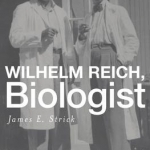Wilhelm Reich, Biologist
BookThis item doesn’t have any media yet
2015 | Biography
Psychoanalyst, political theorist, pioneer of body therapies, prophet of the sexual revolution--all fitting titles, but Wilhelm Reich has never been recognized as a serious laboratory scientist, despite his experimentation with bioelectricity and unicellular organisms. Wilhelm Reich, Biologist is an eye-opening reappraisal of one of twentieth-century science's most controversial figures--perhaps the only writer whose scientific works were burned by both the Nazis and the U.S. government. Refuting allegations of "pseudoscience" that have long dogged Reich's research, James Strick argues that Reich's lab experiments in the mid-1930s represented the cutting edge of light microscopy and time-lapse micro-cinematography and deserve to be taken seriously as legitimate scientific contributions.
Trained in medicine and a student of Sigmund Freud, Reich took to the laboratory to determine if Freud's concept of libido was quantitatively measurable. His electrophysiological experiments led to his "discovery" of microscopic vesicles (he called them "bions"), which Reich hypothesized were instrumental in originating life from nonliving matter. Studying Reich's laboratory notes from recently opened archives, Strick presents a detailed account of the bion experiments, tracing how Reich eventually concluded he had discovered an unknown type of biological radiation he called "orgone." The bion experiments were foundational to Reich's theory of cancer and later investigations of orgone energy.
Reich's experimental findings and interpretations were considered discredited, but not because of shoddy lab technique, as has often been claimed. Scientific opposition to Reich's experiments, Strick contends, grew out of resistance to his unorthodox sexual theories and his Marxist political leanings.
Related Items:
| Published by | Harvard University Press |
| Edition | Unknown |
| ISBN | 9780674736092 |
| Language | N/A |
Images And Data Courtesy Of: Harvard University Press.
This content (including text, images, videos and other media) is published and used in accordance
with Fair Use.
